Fall 2020
Meet the Martins
The first in a series about the Franz River Campus. Biology Professor Katie O’Reilly and five undergraduate scientists have created new habitat for a colony of Purple Martins.
- Story by Jessica Murphy Moo
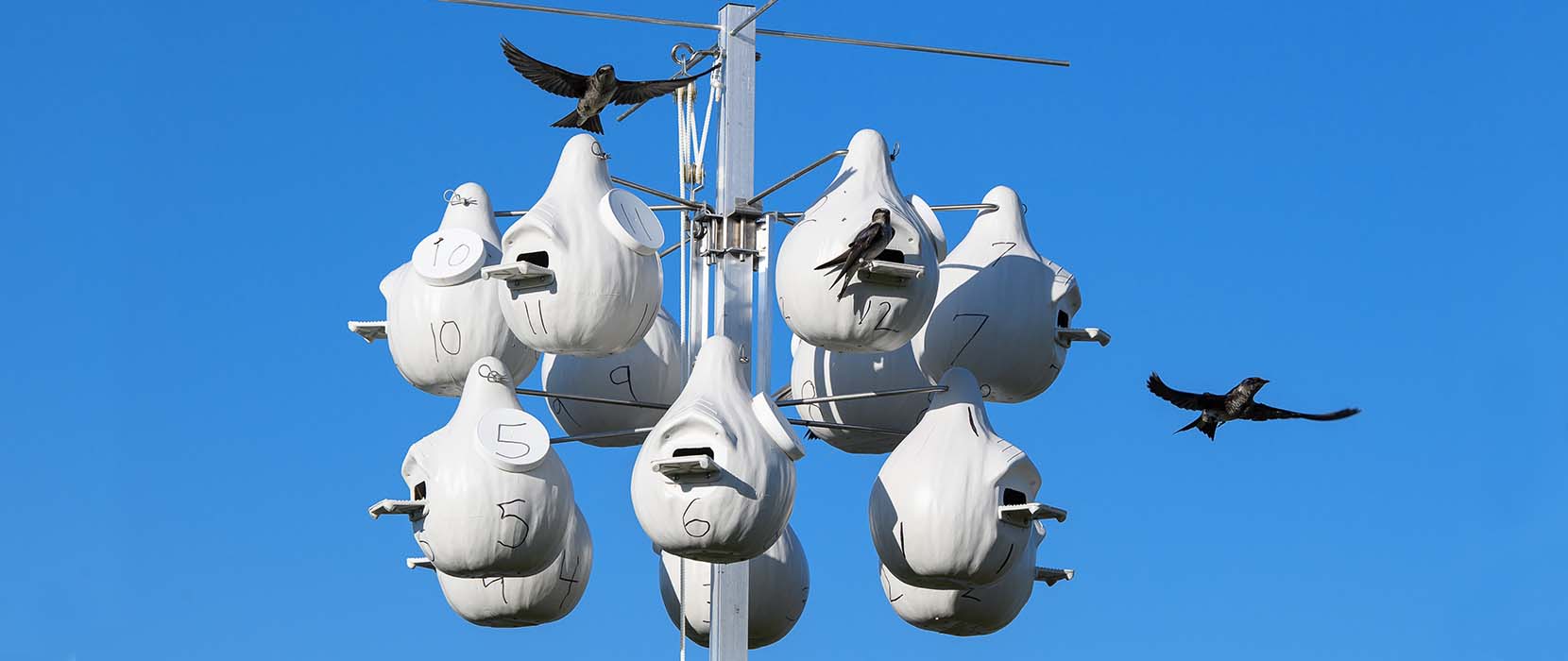
Photo by Bob Kerns
Due to habitat loss, climate change, and pesticides, the Western Purple Martin is a “sensitive-critical” species in Oregon and may soon be listed as threatened or endangered in Washington. So biology professor Katie O’Reilly and five science majors created new habitat—the gourds pictured above—for the Purple Martins to build new nests on University of Portland’s River Campus.

Photo by Bob Kerns
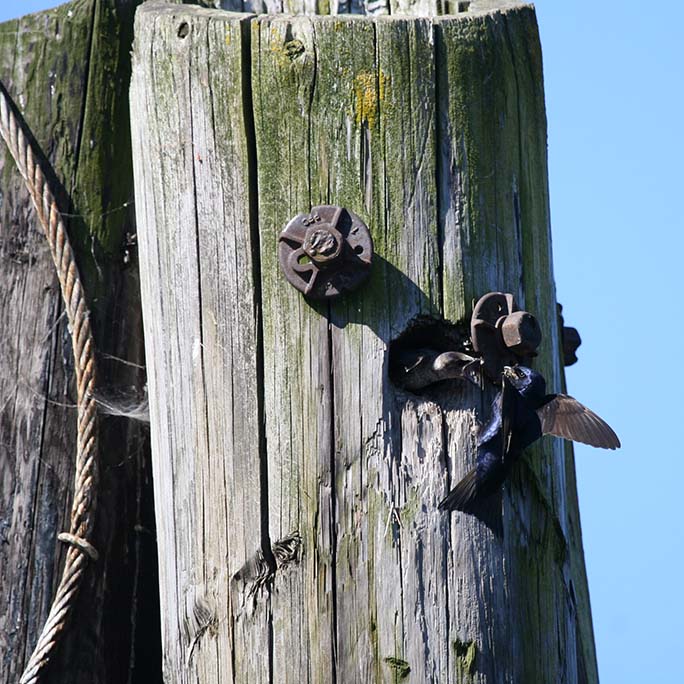
Photo by Bob Kerns
The research was well-suited to times of social distancing. In May, the team kayaked along the shore to examine the pilings and dolphins—remnants of an old shipping dock—to count Purple Martin nesting pairs. When development of the River Campus begins again, these structures will be removed. The team of researchers—Abby Knott ’21, Gabby Casentini ’21, Emily Hosoume ’21, Ellie Winkelmann ’21, Sabrina Baioni ’20—was eager to establish new habitat for the Purple Martins. “We need them to know this is a great place for them to come back to every year,” says Knott, who is on her second year studying this bird population.
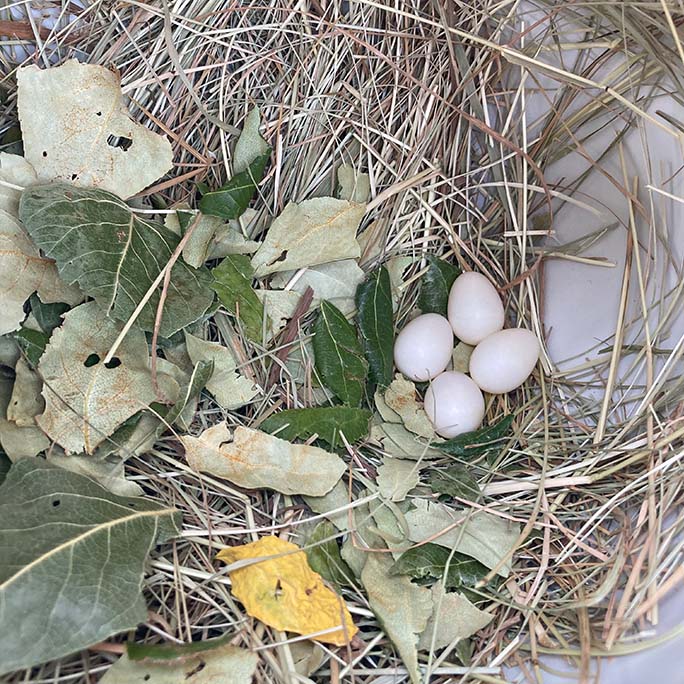
Photo by Gabby Casentini
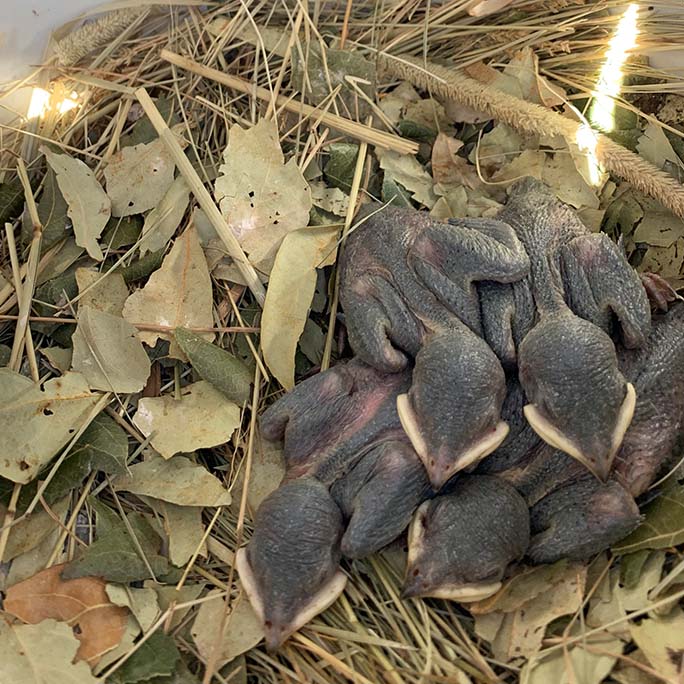
Photo by Emily Hosoume
The older, more experienced males got first dibs on the established habitat in the pilings. The younger males went for the next best thing: the new gourds. The birds seemed to like the new habitat. About the size of a soccer ball, with enough room for a clutch of up to six chicks, the shape of the gourds derives from the actual gourds that Native Americans used to provide as habitat for this native species. The squat opening is the perfect size for these birds, which are the largest swallow with the shortest legs. They can shimmy on through the opening and their competitors—European starlings, among others—cannot. (Birder lore says that European starlings—a non-native species—were introduced to the US by a man who wanted all of Shakespeare’s birds in New York’s Central Park. Whether or not Shakespeare was the motivation, this is a cautionary tale about the consequences of introducing non-native species.)
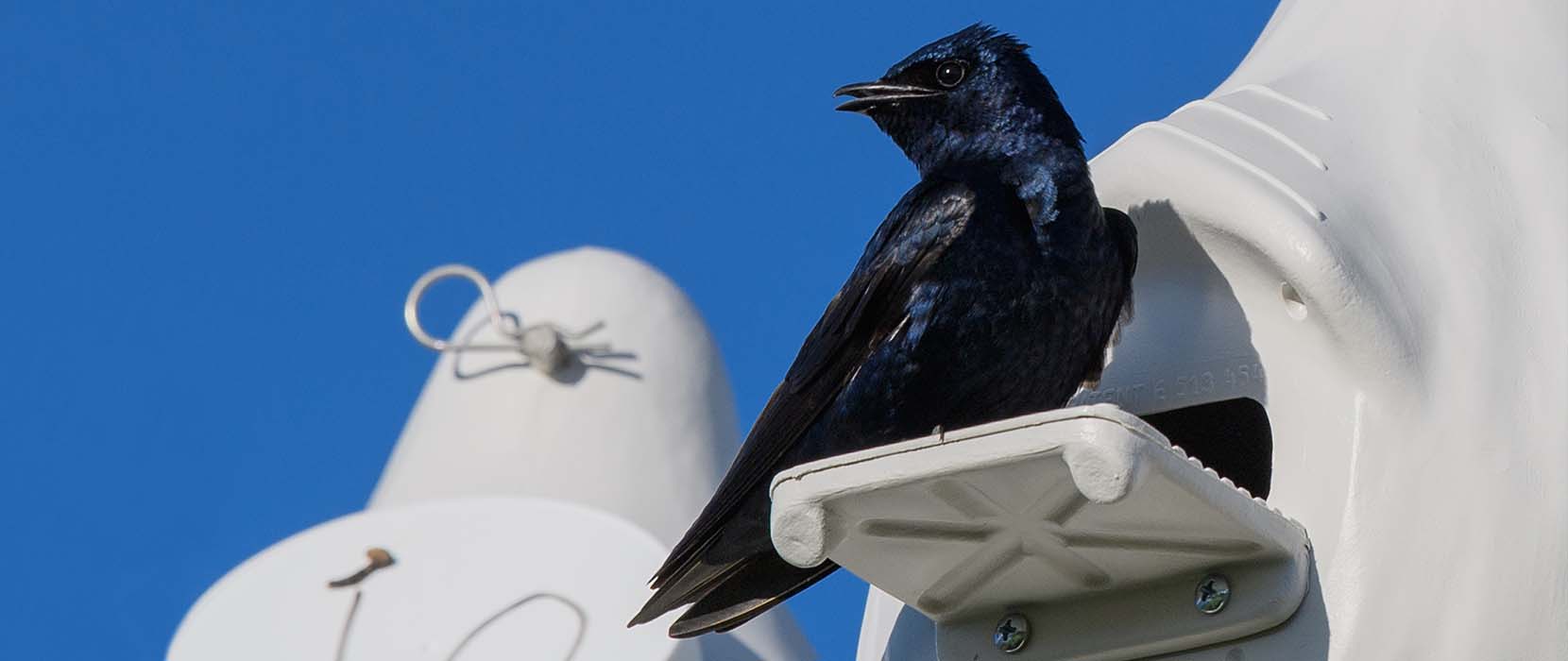
Photo by Bob Kerns
Purple Martins are fun birds to observe. They interact in colonies, meaning they nest near each other for protection. They’re noisy. They’re social. When sitting on the eggs, they will poke their head out of the peekhole. They are aerial feeders, meaning they catch their food—dragonflies, butterflies, mayflies, among others—midair and bring them back to their young. The male and female birds swap places when tending to eggs and chicks. Once a week during the spring and summer, the researchers pulled the gourds down and unscrewed the caps and peeked inside. The appearance of cottonwood leaves meant the birds were making a nest. Then came eggs. Then…chicks! By mid-August all chicks had fledged. The birds will head to Forest Park across the river and then on to South America. If they return next year, O’Reilly and her team hope to band the chicks, so they can track them with even greater accuracy.
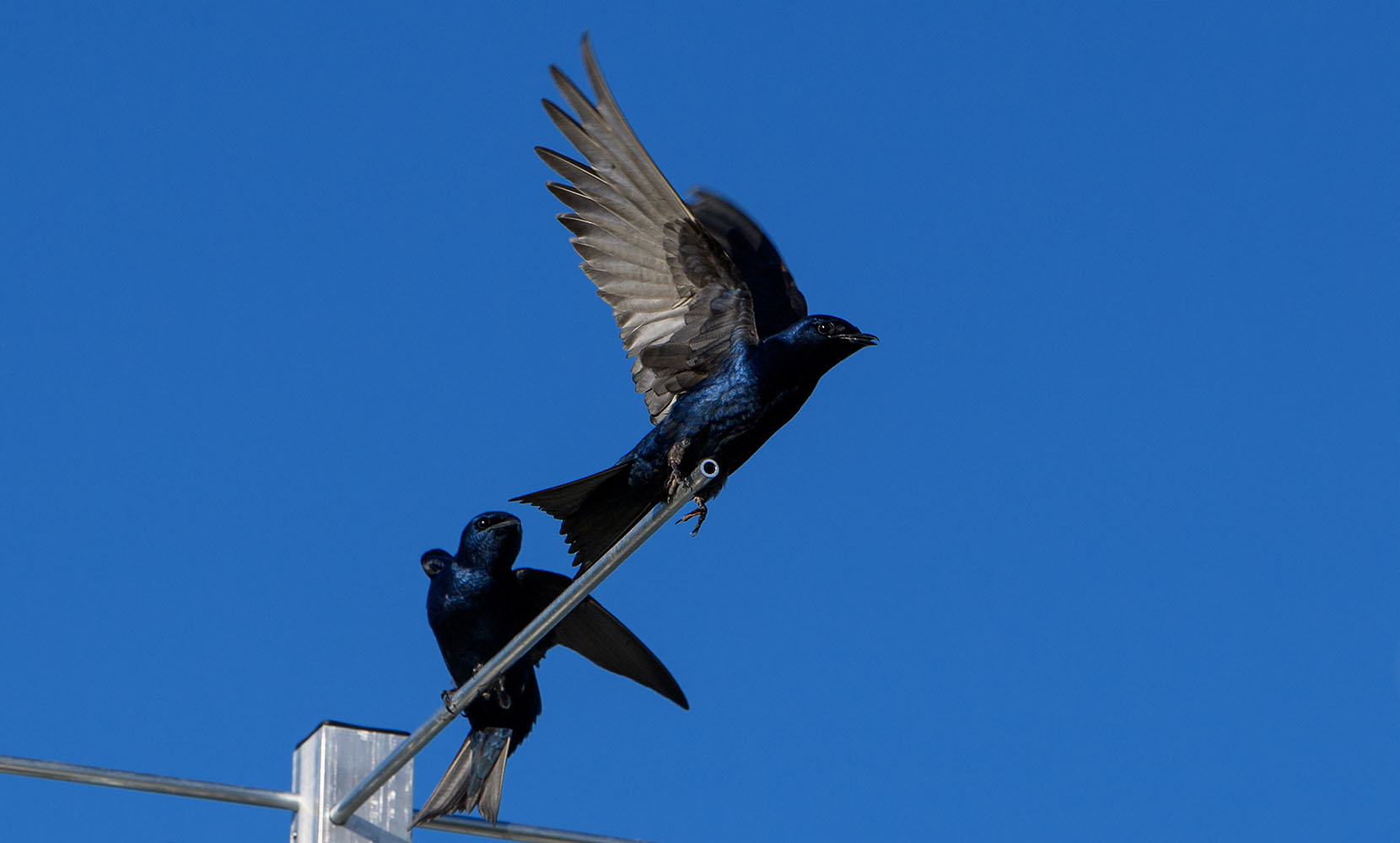
Photo by Bob Kerns